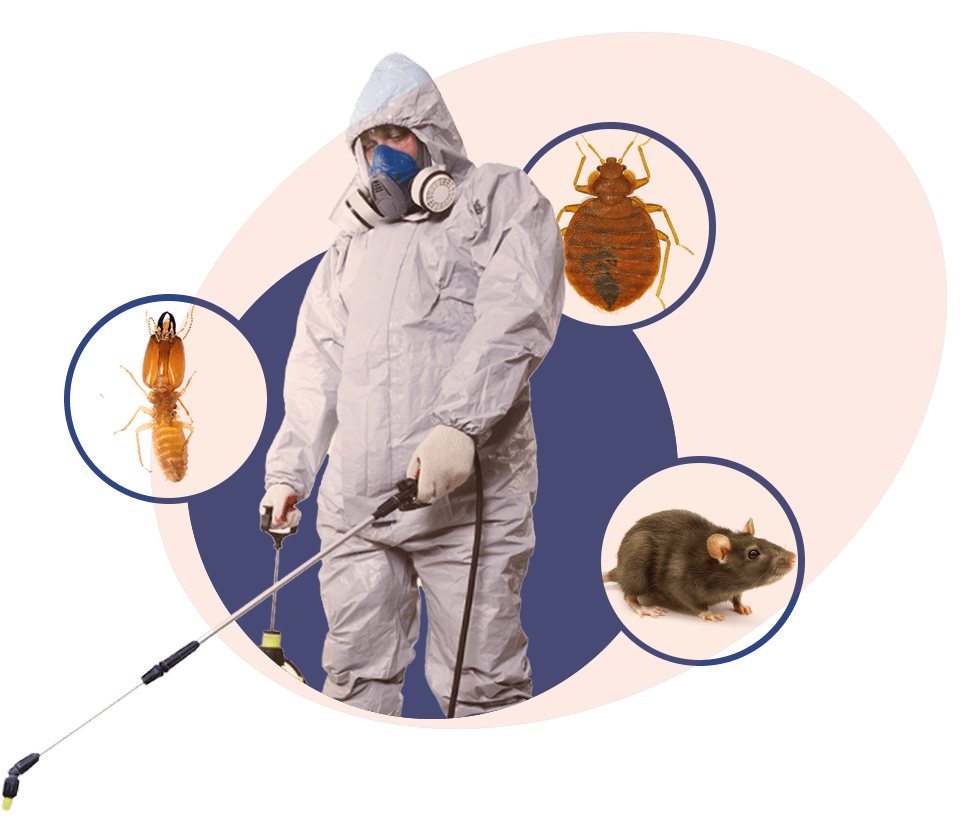Eco-Friendly Parasite Control Approaches for Handling Wildlife in Urban Locations
Urban areas typically discover themselves at the junction of human task and wild animals, leading to one-of-a-kind difficulties in pest monitoring. These strategies not only protect the atmosphere yet likewise boost community engagement in wildlife monitoring. As urban populaces proceed to expand, comprehending the characteristics of wildlife interactions becomes progressively vital.
Understanding Urban Wild Animals Characteristics
Recognizing Urban Wildlife Dynamics is essential for developing reliable and environment-friendly parasite control strategies. Urban locations are significantly coming to be habitats for various wildlife varieties, driven by variables such as habitat fragmentation, food accessibility, and human infringement. Acknowledging these characteristics permits a nuanced method to pest monitoring that lines up with environmental concepts.
Urban wild animals commonly consists of varieties such as raccoons, squirrels, and birds, which adapt to city settings, discovering niches in eco-friendly spaces, parks, and also houses. Their visibility can cause problems with humans, specifically when they manipulate personnels for food and sanctuary. Comprehending the habits and environmental roles of these types educates strategies that minimize unfavorable interactions while promoting biodiversity.
Moreover, acknowledging the interdependencies within metropolitan ecological communities assists in identifying essential locations for habitat conservation and remediation. This expertise adds to the growth of incorporated bug administration (IPM) strategies that consider the environmental equilibrium, consequently reducing reliance on harmful chemicals. By promoting coexistence in between people and urban wildlife, cities can create healthier atmospheres that benefit both locals and regional communities, leading the way for sustainable urban living.
Natural Repellents and Deterrents
Natural repellents and deterrents offer a lasting choice to conventional pest control methods by taking advantage of the power of nature to keep unwanted species at bay. These environment-friendly solutions generally make use of plant-based active ingredients, essential oils, and other naturally taking place substances that prevent insects without hurting the setting.
One reliable all-natural repellent is peppermint oil, which is understood to drive away rats and pests. Its solid fragrance is unpleasant to several pests, making it a preferred choice for city settings. Vinegar and citrus peels can offer as deterrents, as their strong odors are commonly unattractive to different wildlife.
In addition, diatomaceous planet is an all-natural powder that can be spread in areas vulnerable to insect activity, efficiently drying out and hindering bugs without posing threats to non-target types. Garlic sprays and neem oil are acknowledged for their capacity to fend off a vast range of pests, including both bugs and bigger wildlife.
Carrying out these all-natural repellents not just lowers reliance on chemical pesticides however additionally promotes a healthier metropolitan ecological community, cultivating a much more well balanced conjunction in between human beings and wild animals. By using these techniques, urban locations can properly manage parasite populaces while reducing ecological influence.
Habitat Adjustment Techniques
Reliable habitat adjustment techniques play a critical role in sustainable pest administration by altering the environment to make it much less conducive to pest problems. By understanding the eco-friendly characteristics of urban areas, residential property proprietors can execute strategic modifications that discourage pests while advertising biodiversity.
(Misting Systems Pest Control)One key method entails maintaining proper cleanliness. This includes routine waste elimination, protecting trash can, and removing standing water to lower breeding websites for bugs and rodents. In addition, landscape design methods such as choosing indigenous plants can enhance environmental equilibrium, providing environments for useful microorganisms while reducing sources for bugs.
One more essential strategy is to secure entry factors in buildings. Evaluating and repairing cracks in structures, walls, and windows can considerably lower pest access. In addition, developing physical obstacles, such as fences or plant barriers, can prevent wildlife movement into human-inhabited locations.
Integrated Pest Administration Practices
Building upon environment modification techniques, incorporated parasite administration (IPM) practices supply an alternative method to controlling bug populations while minimizing ecological impact. IPM incorporates different approaches, including biological, social, mechanical, and chemical controls, to achieve reliable bug monitoring.
Biological control involves the introduction of all-natural predators or parasites to lower bug populations. Cultural practices, such as plant rotation and sanitation, interfere with pest life process and diminish their environments - Pest Control. Mechanical controls, like traps and obstacles, supply prompt relief from bug pressures without chemical treatment
Chemical controls are utilized as a last resort, concentrating on targeted applications that limit damage to non-target species and the atmosphere. The option of ecologically friendly pesticides, when needed, is integral to the IPM framework. In addition, keeping an eye on pest populaces and assessing prospective damages assists inform decision-making, guaranteeing that treatments are prompt and reliable.
Community Involvement and Education And Learning

(Fire ant control Port Charlotte)Workshops and educational sessions can furnish residents with knowledge regarding native species, habitat conservation, and effective non-toxic pest administration strategies. Cooperation with institutions, regional companies, and government agencies even more improves educational outreach, ensuring that necessary information gets to diverse audiences.
In addition, community-led campaigns, such as area clean-up days and habitat reconstruction projects, not just advertise biodiversity however likewise strengthen area connections. Pest control service. By motivating residents to share their experiences and monitorings, communities can develop targeted strategies that resolve details neighborhood parasite concerns
Incorporating comments from citizens into bug monitoring plans enables Visit Website an extra receptive and adaptive technique to wild animals difficulties. Ultimately, educated and involved neighborhoods are vital to accomplishing long-term success in environment-friendly bug control, causing healthier city environments that value both human and eco-friendly requirements.

Verdict
In final thought, environmentally friendly pest control comes close to deal lasting solutions for taking care of city wildlife. By focusing on environment modification, using all-natural repellents, and carrying out integrated parasite management techniques, neighborhoods can cultivate an unified conjunction with local fauna.